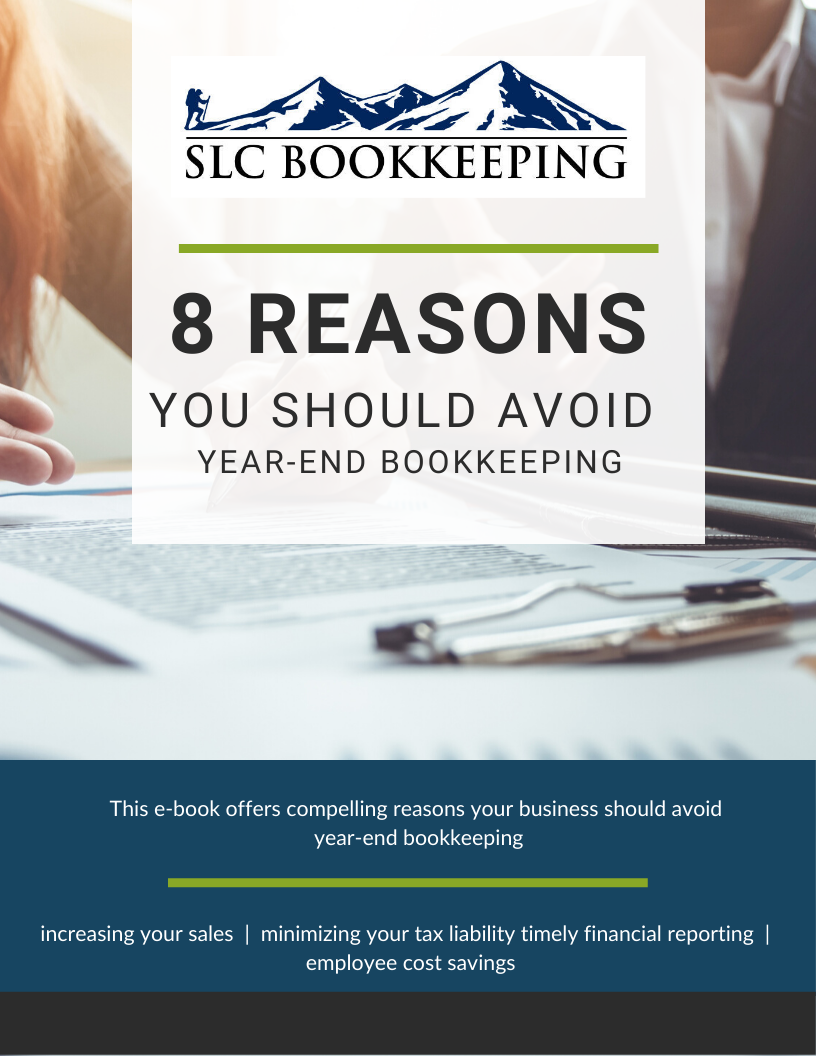As we get closer and closer to year-end most businesses will begin thinking about taxes. One of the most hated words in the business world… taxes. By the time year-end passes and you actually start to think about your bookkeeping and taxes you are too late.
You need to attend to your bookkeeping before year-end and do some tax planning. Updating your bookkeeping and reviewing it prior to year-end is very important as you can actually do something about your tax situation before the turn of the calendar. Here is a must do now checklist for your year-end bookkeeping.
#1 Reconcile Your Books
The best thing you can possibly do for your bookkeeping and taxes is to reconcile QuickBooks. A reconciled QuickBooks file that can be confirmed with a bank statement does a lot of positive things for your business.
A truly reconciled file tells your bookkeeper and tax preparer that everything is in the file; now we just need to make sure everything is in the right spot.
If you’re still using a common bank account for both your business and personal finances, you should probably make a mental note to halt that practice at some point during the new accounting year.
In the meantime, you’ll need to analyze all the unreconciled expenses that have flowed through your shared account to determine which were business-related, and which ones were personal.
Having your CPA handle tasks that should be done by your bookkeeper will be very costly. Also, if you hand your CPA a QuickBooks file that is not reconciled you are almost asking for a tax extension to be filed.
Reconciliation Checklist
Follow these steps to ensure that your final books are as accurate as possible. Start by making sure you reconcile ALL accounts, not just bank accounts. Reconcile all of these accounts:
Credit Cards
Loans
Lines of credit
Payroll liabilities
Bank accounts
Asset accounts
Once you’re satisfied that everything is in order, you should run a trial balance to ensure debits equal credits across your accounts. This is also a great way to check for abnormal account balances and potential posting errors.
Follow this up by making adjusting journal entries for any depreciation expenses or fixed asset purchases, and you should be ready to generate and review your company’s year-end financial statements.
#2 Clean Up Your Accounts Receivable and Accounts Payable
Maintaining clean accounts payable and receivable is something we always recommend. However, before year-end is a great time for a once over tune up of your accounts receivable and accounts payable.
Running your aging reports on both accounts receivable and payable may reveal some problems or maybe just some errors.
Common accounts receivable errors I see are not offsetting credits against old invoices. You want to try and collect your outstanding receivables balances before year-end and possibly write of the bad debt that you will never collect.
Looking over aged payables may reveal some old inaccurate balances.
Do some research on any suspicious balances and request statements from those vendors. Going into year-end with a firm handle on payables and receivables will definitely benefit you.
When it comes to cleaning up your end-of-year accounts, the best place to start is with source documents like receipts and invoices. Whether you work with physical files, or you’ve switched to a paperless system, you’ll still need to make sure all your records are accounted for.
Accounts Receivable Checklist
Go through your customer accounts to check that you’ve issued, logged, and stored invoice copies for all completed services, projects, and orders.
Separate out invoices that have yet to be collected on. This will help determine whether any of your outstanding receivables can be written off as bad debt.
Accounts Payable Checklist
Go through your supplier accounts and follow the same procedure as accounts receivable for your payable invoices.
Unearth any unpaid bills to ensure they get processed in the correct accounting period before you close out your year.
#3 Do an Asset Review
One thing that you should do is to take a peek through the details of your asset accounts. You want to be looking for any glaring errors that you mistakenly booked to an asset account.
If you are staring at a $30.69 charge in a fixed asset ‘Equipment’ account you most likely need to reclassify that small charge.
Asset Review Checklist
Look for any blatant asset errors and reclassify them to the correct account.
#4 Take Care of Your 1099’s
Nothing is more frustrating and stressful than having a 1099 independent contractor mess in January. You already have enough on your plate in January and the last thing you need is another deadline. You want to be focusing on sales and growth to start the new year not 1099 compliance and taxes.
We tell our clients to stay on top of 1099’s throughout the year rather than waiting until the deadline is looming.
Most businesses are aware that they should request a W-9 form from their vendors, but very few actually follow through and complete the task.
It is a lot easier to get a W-9 filled out from a vendor before you pay them, rather than 6 months down the road after the contract work has been completed.
I always tell clients to let their contractors know they can get paid as soon as they submit a filled out W-9 form; works every time.
Come January rather than scrambling to gather the information you will be hitting print and mailing 1099 forms out without any issues or stress.
1099 Year-End Checklist
Before year-end do a review of your contractors and make sure to input the 1099 information in QuickBooks.
#5 CPA Review Before Year-End Taxes
You have followed through the checklist thus far and all before year-end…good for you. However, don’t stop reading because this is by far the most important step. You need to do a year-end tax review with your CPA to get an estimate on your tax liability.
Why would you go through all of this trouble of getting ready for your taxes without actually reviewing your estimated tax liability?
Many small business owners skip this step and I scold them over it. I think many owners dislike taxes so much that they are actually afraid to see what their potential tax liability is. You need to review your taxes with your CPA prior to year-end for two very important reasons.
1. There are a lot more tax advantageous moves you can make prior to year-end as opposed to waiting until the calendar turns to a new tax year.
2. If you are going to owe taxes wouldn’t you rather have 4 months’ notice rather than just a few weeks?
Most people hate getting hit with any unexpected bills and taxes should be treated no differently. If you do owe at least you will be prepared and you will not be surprised by your tax liability.
CPA Review Checklist
Perform all the above steps and submit your books to your CPA
Have your CPA generate a estimated tax liability
#6 Have a Tax Plan in Place
When you leave your bookkeeping duties for too long of a time it can also take a hefty investment of both time and money to help set them right.
Closing out your books at year-end is largely about ensuring every financial transaction related to your business operation has been accurately recorded.
Not only does this allow you to generate the necessary reports for understanding where your company stands financially, it gets you ready to file your annual tax return. Working with a proven accounting professional can help you accomplish both of those goals.
Among other things, timely accounting habits keep your business on track financially and legally by helping you avoid:
- cash flow management issues,
- costly interest charges, late fees, and overdraft penalties,
- overlooked tax remittances and unnecessary audits,
- missed tax deduction opportunities, and
- the miscalculation of profits and costs that can lead to unhealthy business decisions
The easiest way to wrap up one fiscal year and get ready for the next is with a systematic approach to getting your books organized. Follow these simple steps and bring your CPA the cleanest set of books you ever had. One last thing, don’t forget that tax review before year end…it’s just that important.


Leave a Reply